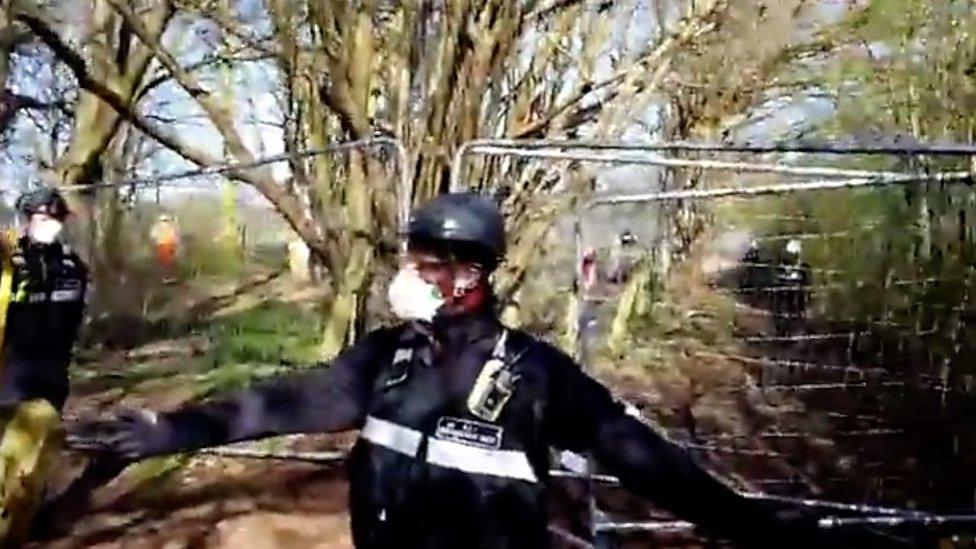HS2: Moving ancient woodland habitat for rail line flawed, ecologists say
- Published
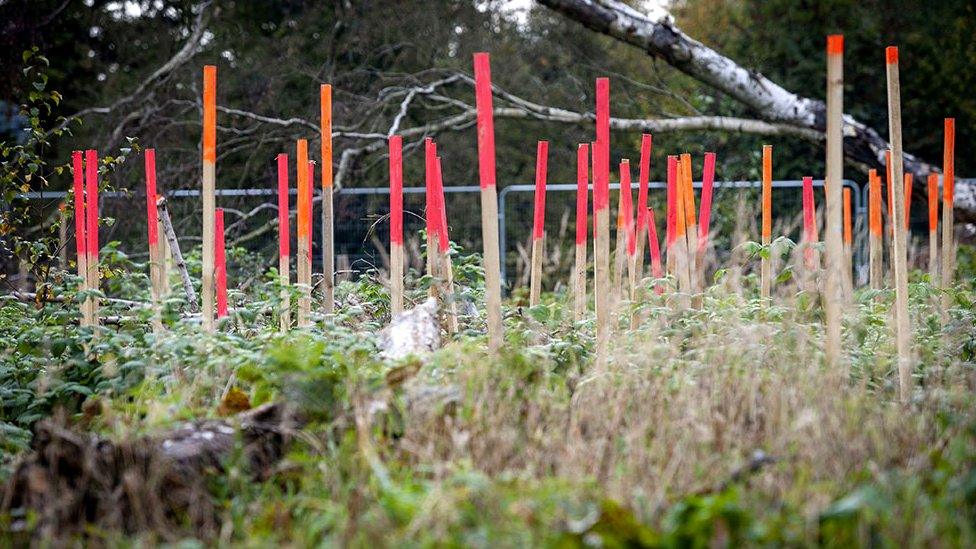
The site of a new 'ancient wood'
Moving ancient woodland habitat cut down to make way for HS2 is a fundamentally flawed idea, leading ecologists say.
The company behind the new rapid rail connection between London and the north of England is cutting down trees in the course of the construction.
HS2 say the best strategy for the environment is to move the woodland soils to other places.
Experts have told the BBC there is no strong evidence this method works and say it is a "smokescreen".
HS2 acknowledges the evidence for the plan is "limited".
'It's madness'
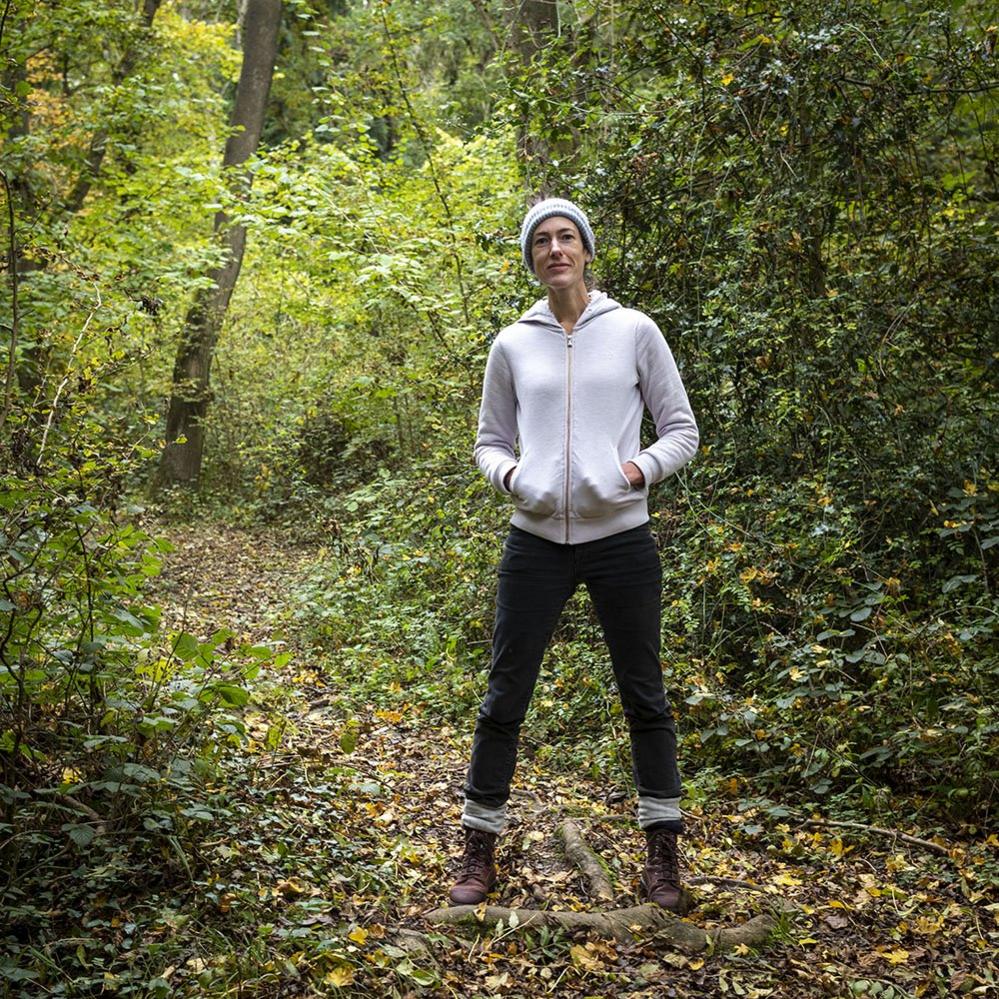
Penny McGregor said South Cubbington Wood in Warwickshire meant "everything to the community"

Penny McGregor's family own part of ancient South Cubbington Wood in Warwickshire, of which 2 hectares (4.9 acres) is currently being cut down.
"This means everything to the community," said Miss McGregor.
"There are ashes scattered here of people's loved ones. It's always been a place where people go. It's de-stressing, it's good for you.
"I have tried to show [prime minister] Boris Johnson and [transport secretary] Grant Shapps, but no matter how important a place seems to be to locals, this high-speed line trumps everything.
"It's becoming less and less important as we go forward with what's happening with Covid. It's madness."
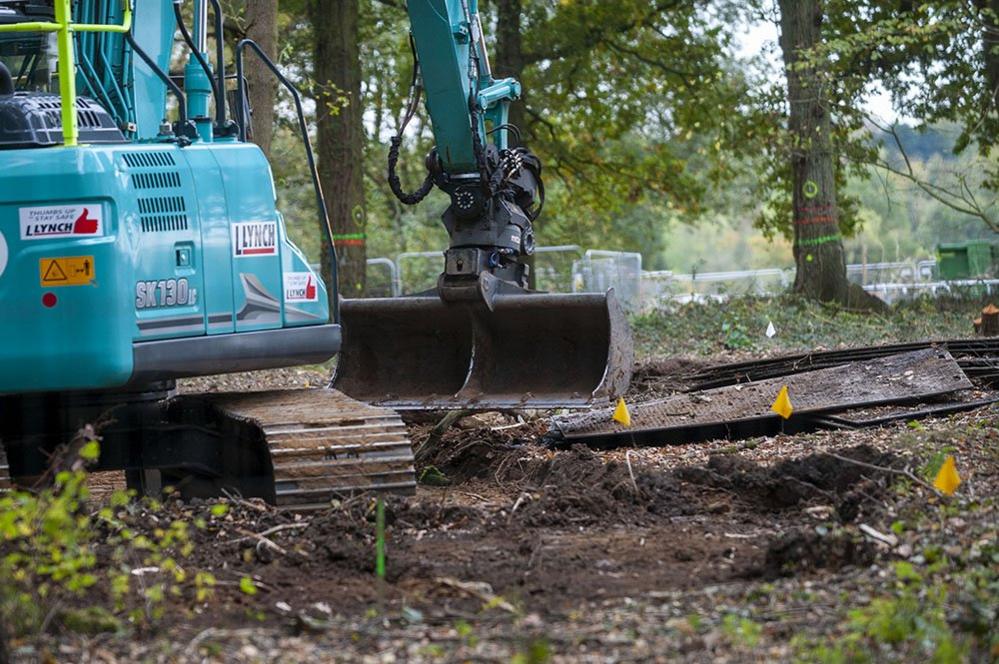
Soil being scraped from an ancient wood
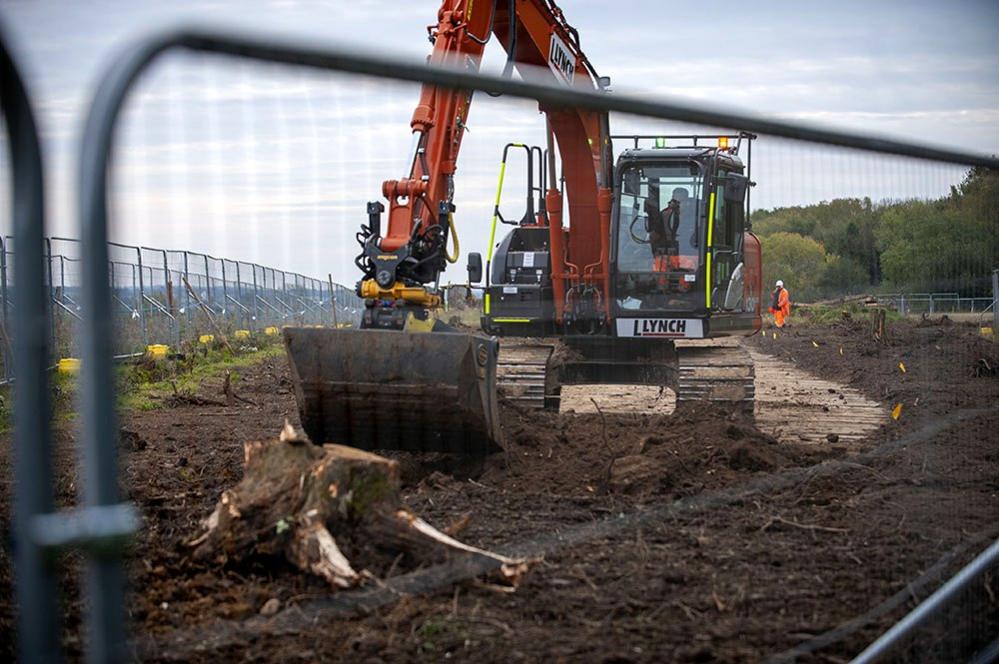
The translocated earth is laid in place at another site

A large tree is moved to the new site
Elements of the ancient woodland are being translocated to a field next door.
Translocation was originally described as moving a specific plant, animal, or insect for the purposes of conservation.
But it has since controversially been used to define moving entire ecosystems that are in the way of human development.
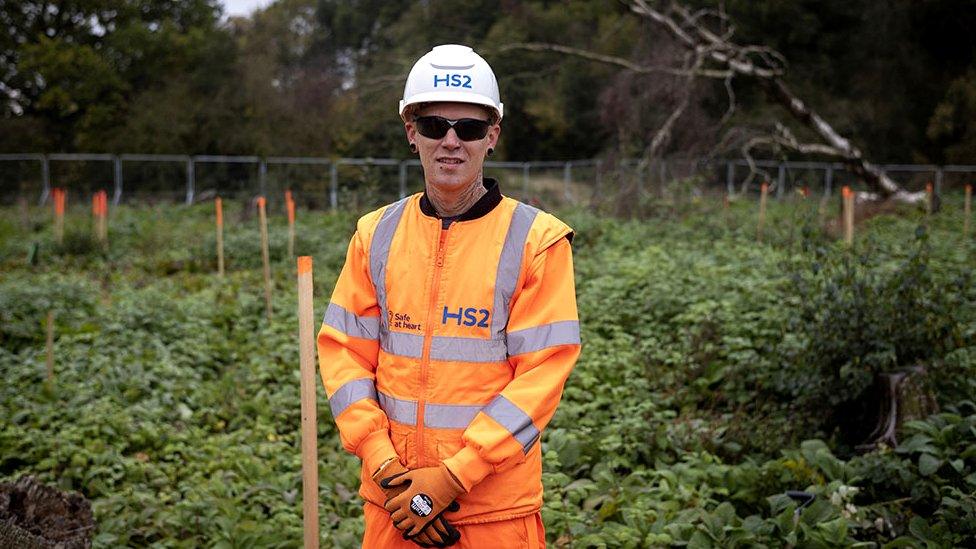
HS2 ecologist Sam Whittall said the company was aiming to "create the same habitat"
First, the ancient woodland - the "donor site" - is analysed and mapped. Then the vast majority of the trees are cut down. The soils are dug up and moved in trucks straight to a nearby "receiver" site.
'From A to B'
Coppice stools, saplings and bulbs are replanted. Bat boxes, reptile banks and ponds may be installed.
HS2 ecologist Sam Whittall said: "We are aiming to create the same habitat… the idea is to move that habitat from A to B."
The theory is the wood will live on, just in a different form and place.
However, there is no robust evidence this will work, or established method of measuring success.
Questioned about the strategy, external, HS2 said it "recognises" there is "currently a lack of long-term detailed research into the post-translocation success of habitat translocation and there is limited robust published evidence of the effectiveness of ancient woodland soils translocation".
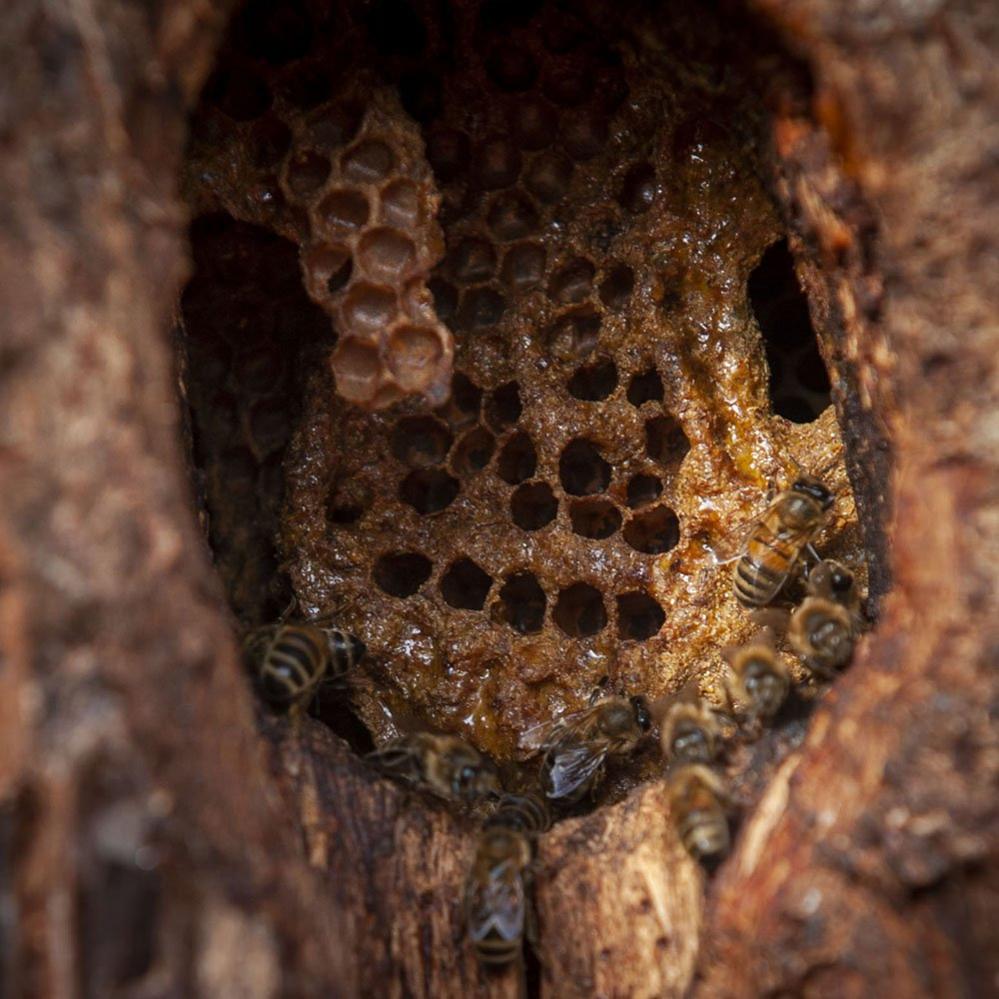
Bees have made a hive in an old stump on the new site
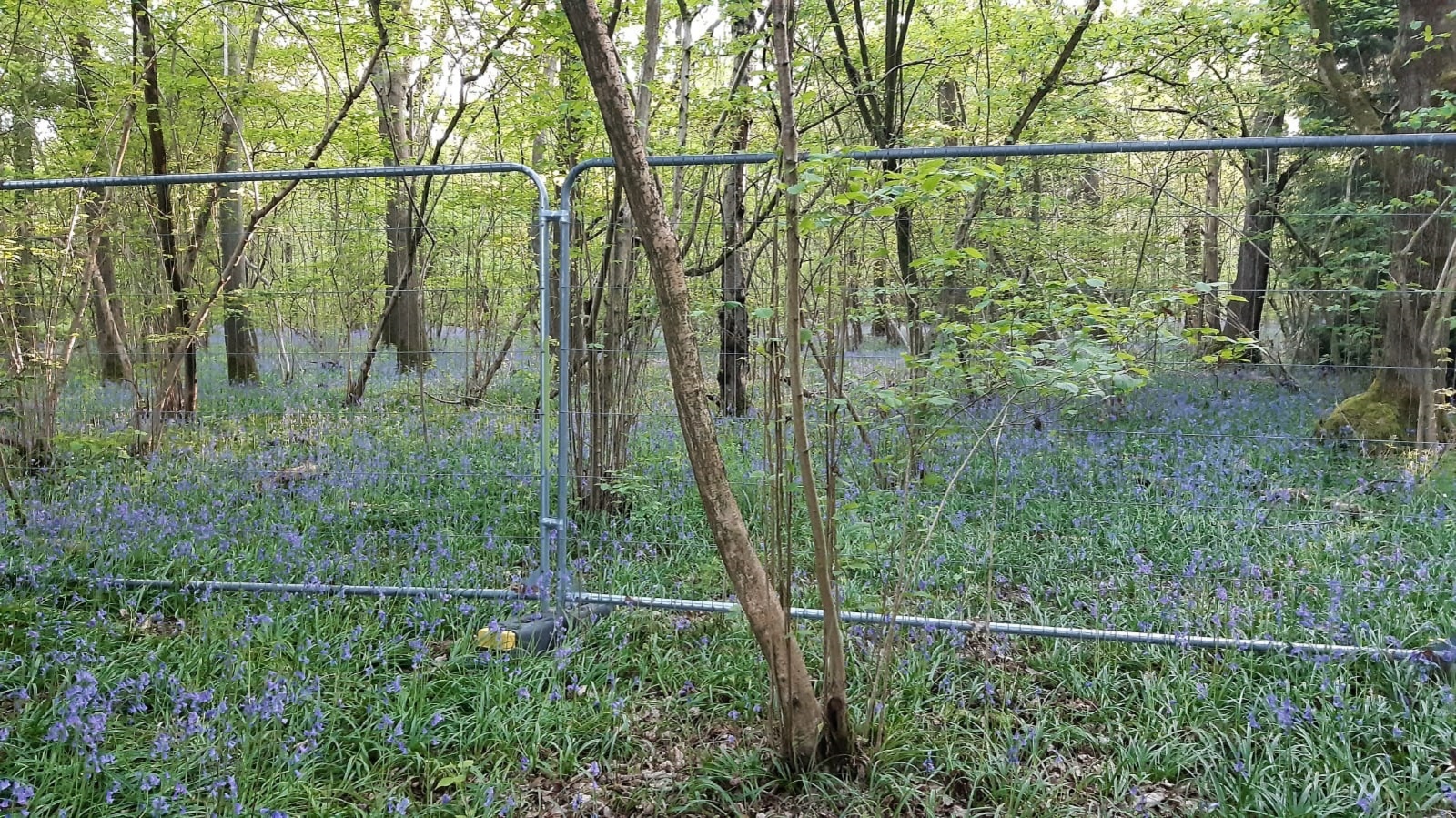
South Cubbington wood before the work began
'Tearing up a Turner masterpiece'
David Coomes, professor of forest ecology and conservation at the University of Cambridge, said translocation in this sense "is like tearing up a Turner masterpiece and tossing little bits of it in to a new art installation and hoping people don't notice the difference".
He said: "There are complicated networks and they take a long time to come together - hundreds of years - particularly the three-dimensional structure of the forest, the trees which have hollows for bats, the homes for lots of different fungi and lots of different insects."
Dr Mark Everard, from the University of the West of England, said translocation was "essentially a smokescreen for destruction and recreation".
"You can't create ancient, you can't instantly create ecosystems.
"It hasn't got the same microbiology or hydrology. It is treated as a panacea and it is most definitely not. At best it is gardening."
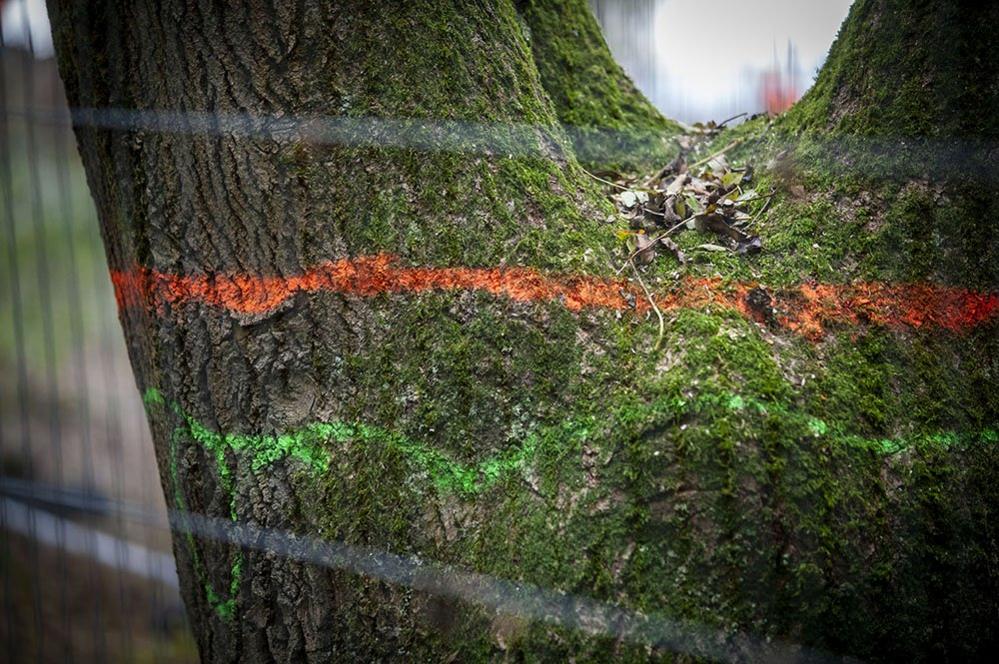
A marked tree in the donor area
Merlin Sheldrake, biologist and author of Entangled Life, a book about the study of fungi, said: "Different communities of organisms, whether animal, fungus, bacteria, or protist, live at different depths, or around the roots of different species of tree.
"If you dig up, transport, and deposit the soil somewhere else you will inevitably disrupt and destroy most of the intricate food webs that you are trying to preserve."

What counts as an ancient woodland?
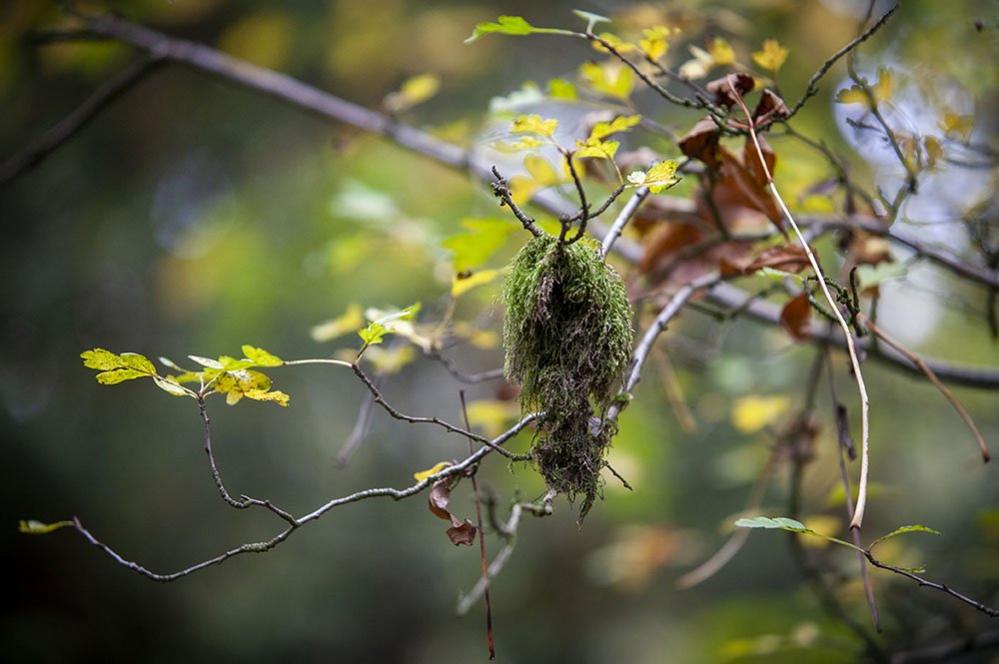
Moss hangs on a tree in part of Cubbington Wood that will remain
For a wood to be formally listed as "ancient" it needs to have been present since at least 1600 (1750 in Scotland)
There are only isolated fragments left, covering just 2.5% of land in the UK
Ancient woodland is described as "irreplaceable" in the government's keepers of time policy paper, external.
The Woodland Trust says the London to Crewe HS2 line directly affects 44 ancient woodlands, with the loss of approximately 40 hectares - equivalent to around 75 football pitches
HS2 says 43 woods will be affected - 39 hectares

HS2 said seven million new trees and shrubs will be planted along a "green corridor" along the first stage of the route.
And with respect to translocation, it hopes to "inform research and future ecological approaches".
50 year commitment
The company took the BBC to see its project in Broadwells Wood in Warwickshire.

New ponds and banks for wildlife have been created at the site in Broadwells Wood
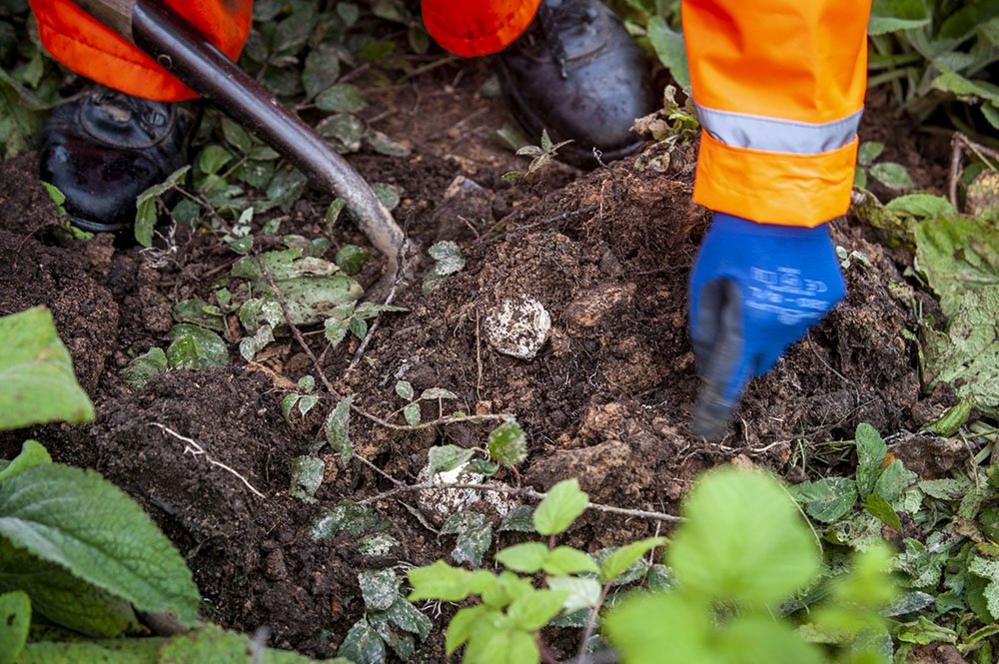
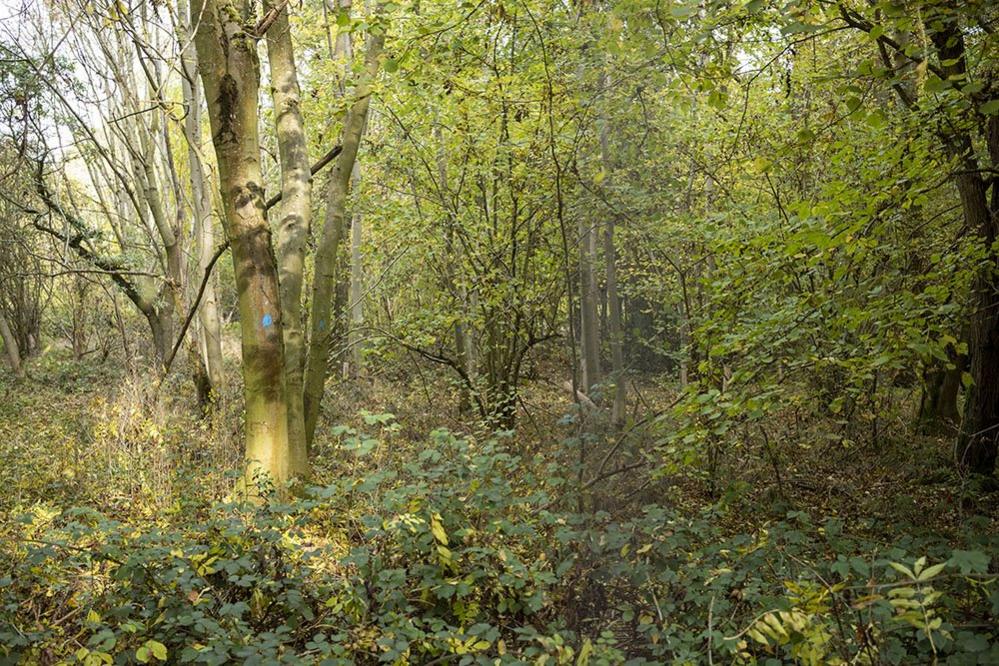
Ancient woodland at the site untouched by the work
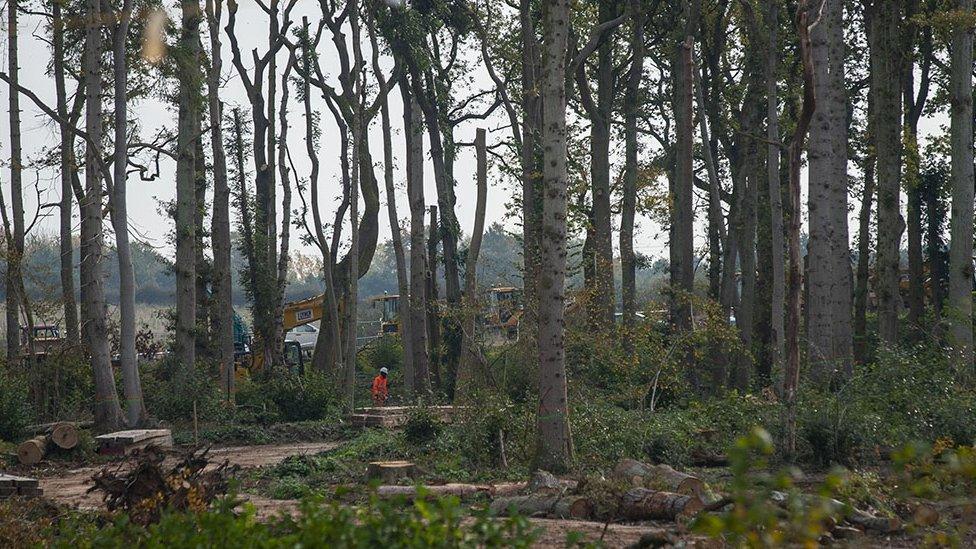
The donor site and route of HS2

The new site with a deadwood monolith
To the outrage of wildlife charities, a large part of the wood was felled in April - against its own guidance for translocation to be carried out in "late autumn or early winter".
It is now the so-called SK130 donor site.
Mr Whittall said it had been divided in to "cells" - layers of leaf litter and topsoil split, scraped up with a digger, transported in a dumper, and replaced.
A "feature" like a "dead wood monolith" or a coppice stool was placed every 120 square metres.
Six months on, the stump of a sweet chestnut has sent up a single shoot, there are several dozen living saplings and some bluebell bulbs have started to grow roots.
Bees have moved into a hole in a dead tree.
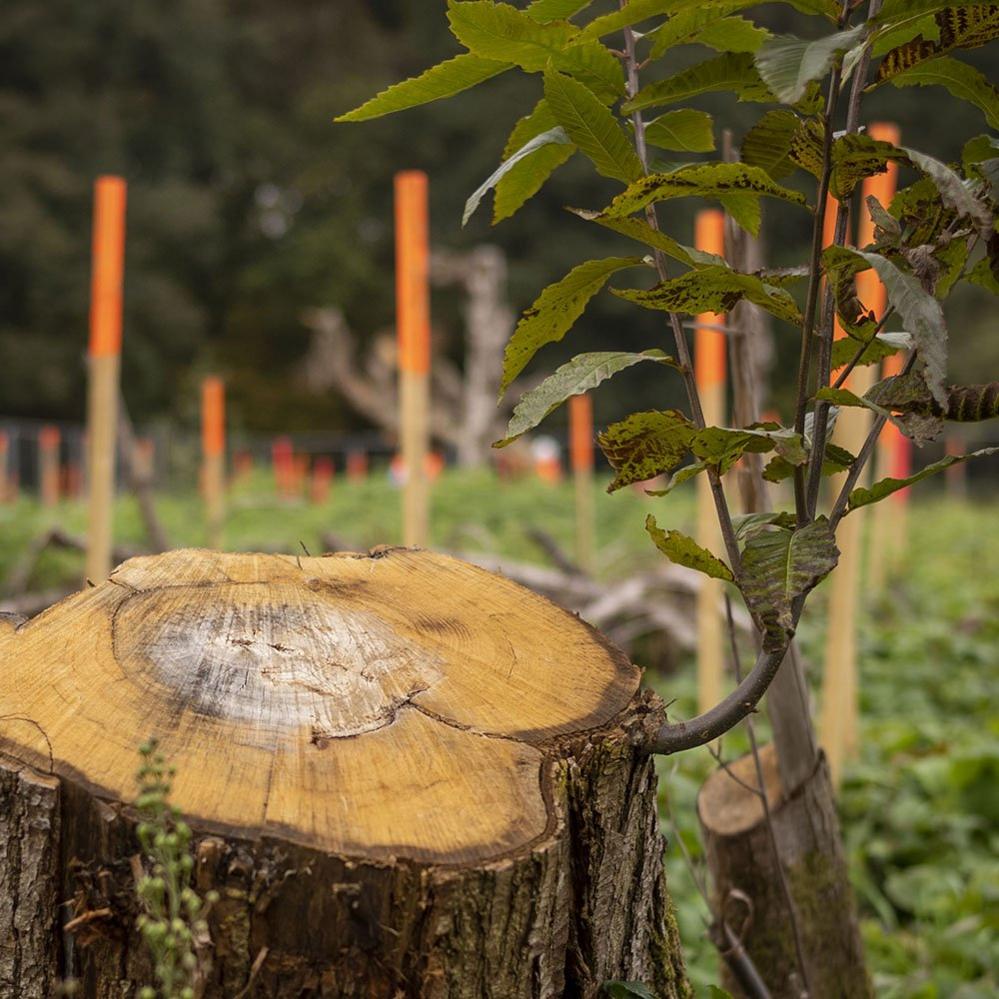
New growth from a sweet chestnut which has been moved to its new home
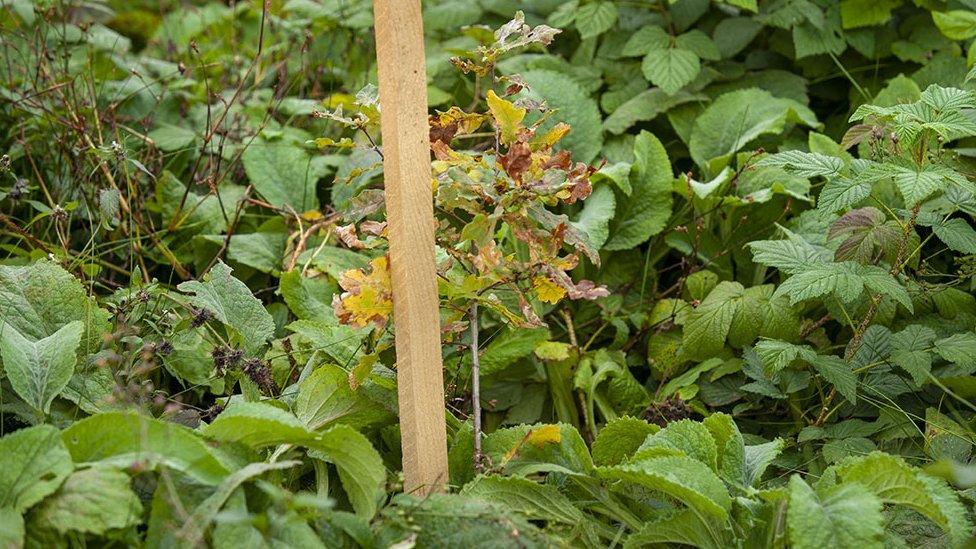
"You can see it's been a great success," said Mr Whittall.
He said they would assess SK130, documenting the flora and fauna and have committed to do this for the next 50 years.
"In terms of ecological growth, it takes time, obviously."

YOUR WORK, YOUR MONEY: Is my bar business better off in Tier 3?
WHAT PLANET ARE WE ON: Sir David Attenborough talks about the impact of the pandemic on tackling climate change

- Published20 October 2020
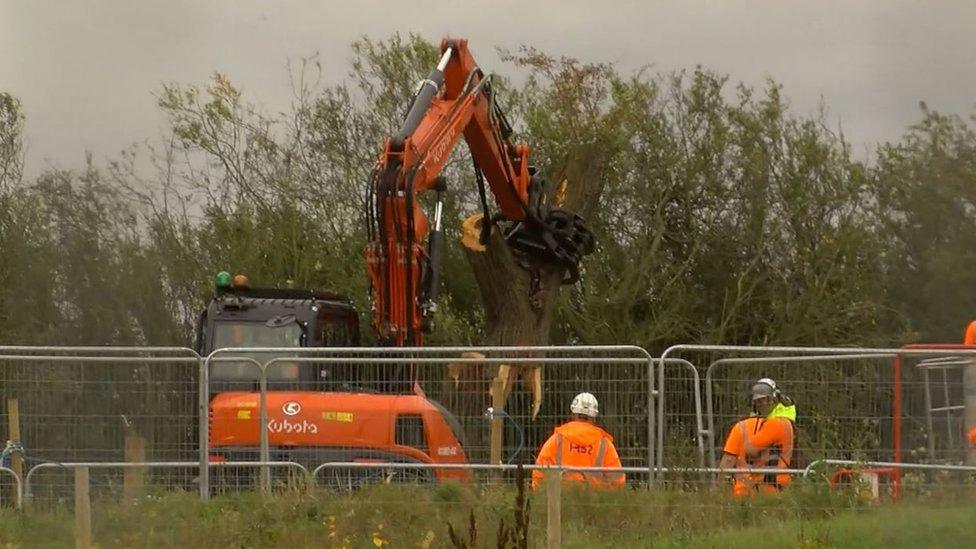
- Published30 September 2020
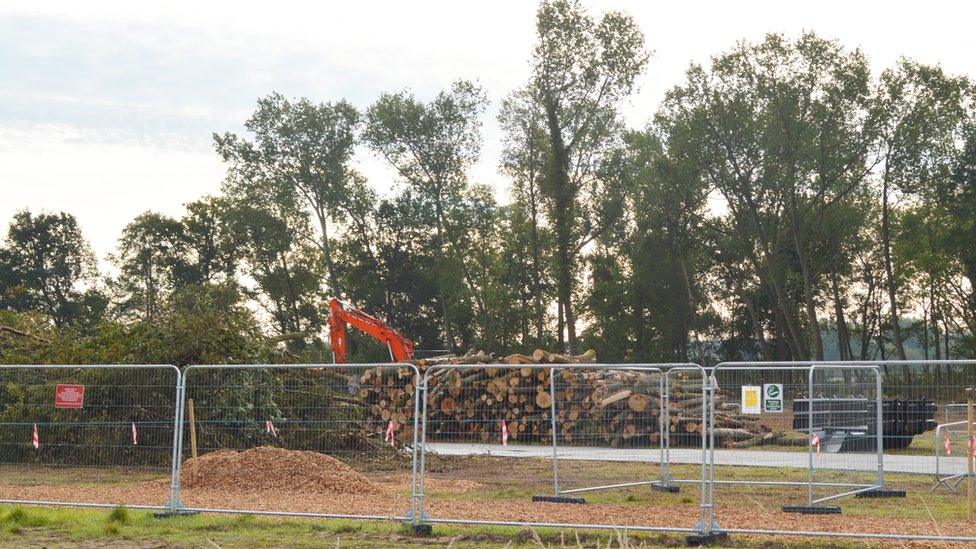
- Published4 May 2020
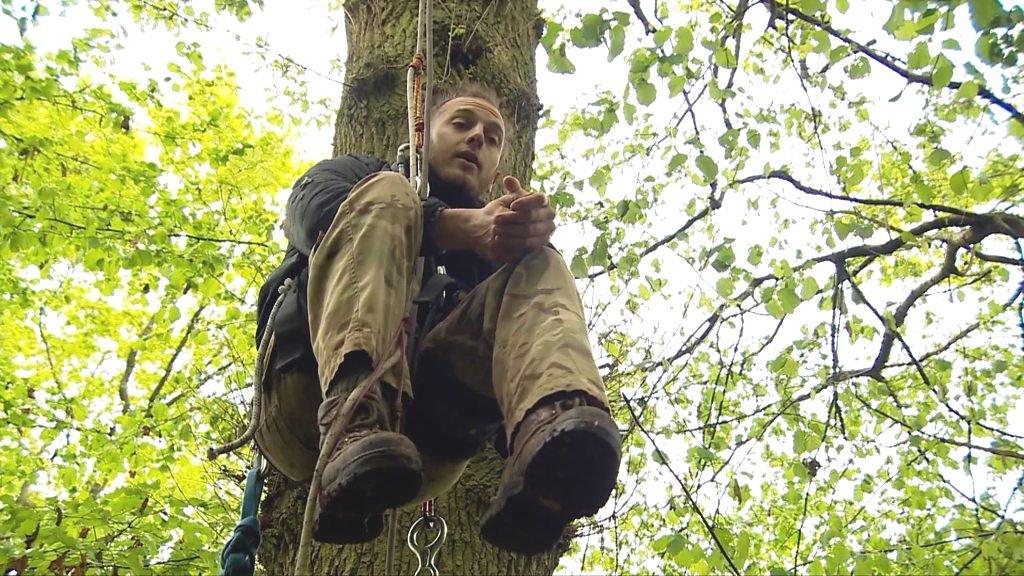
- Published26 March 2020
